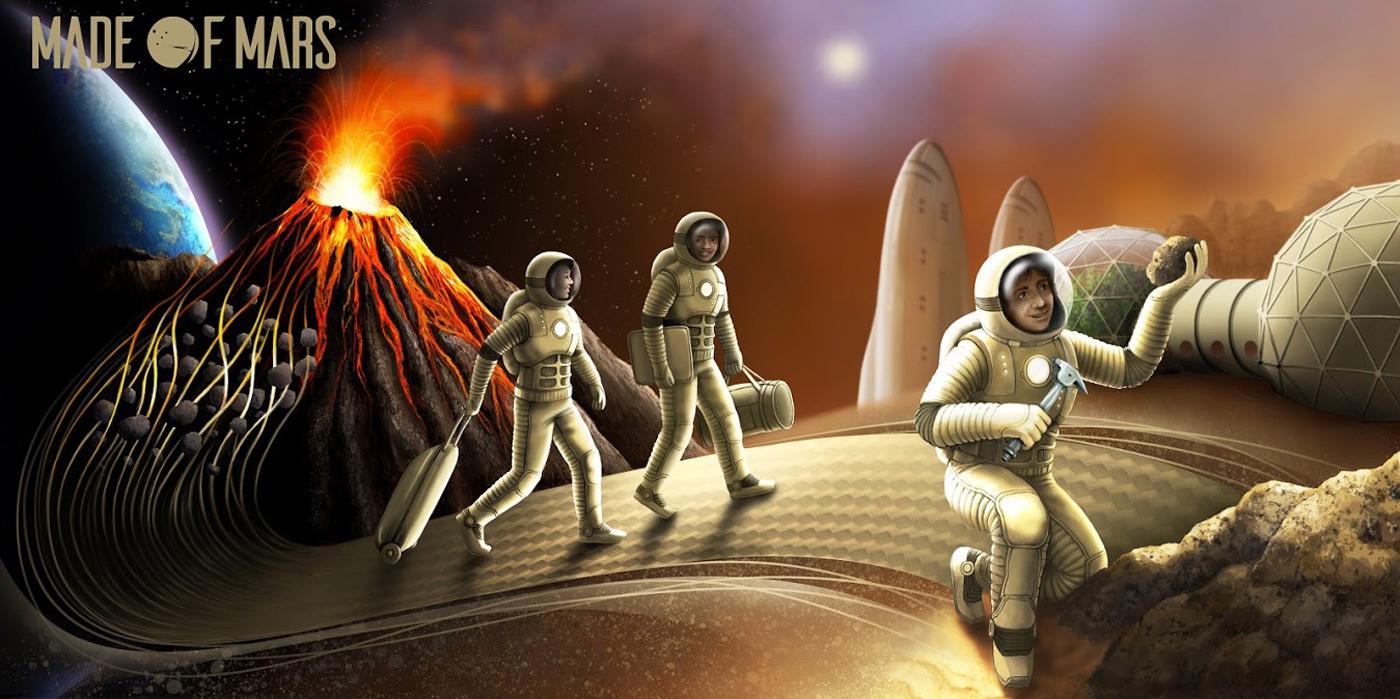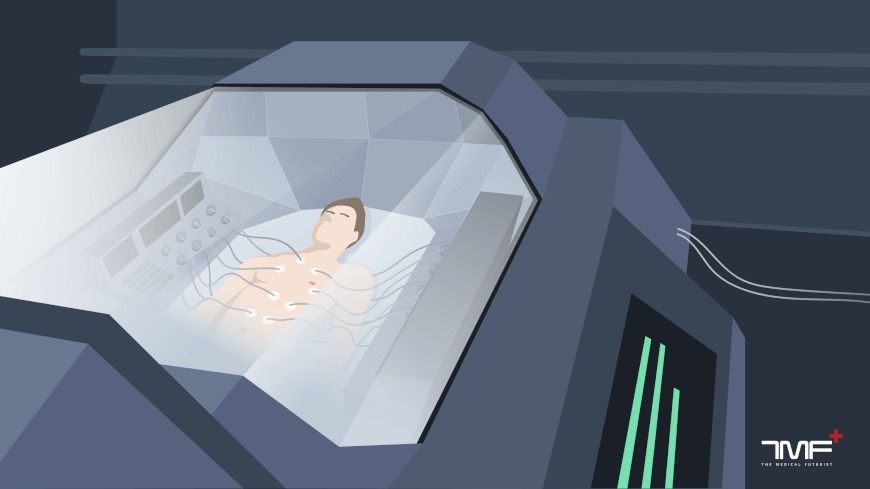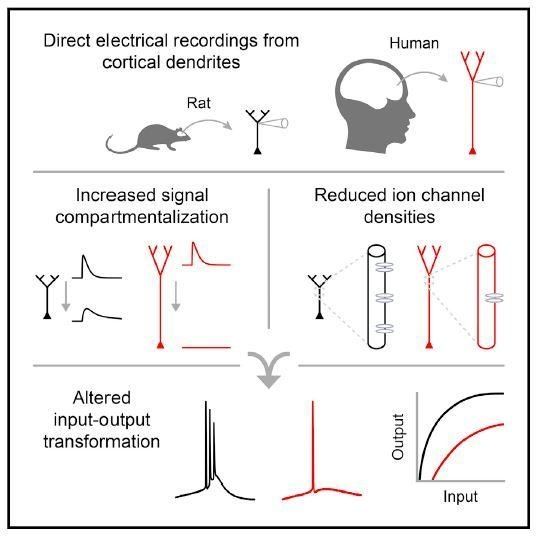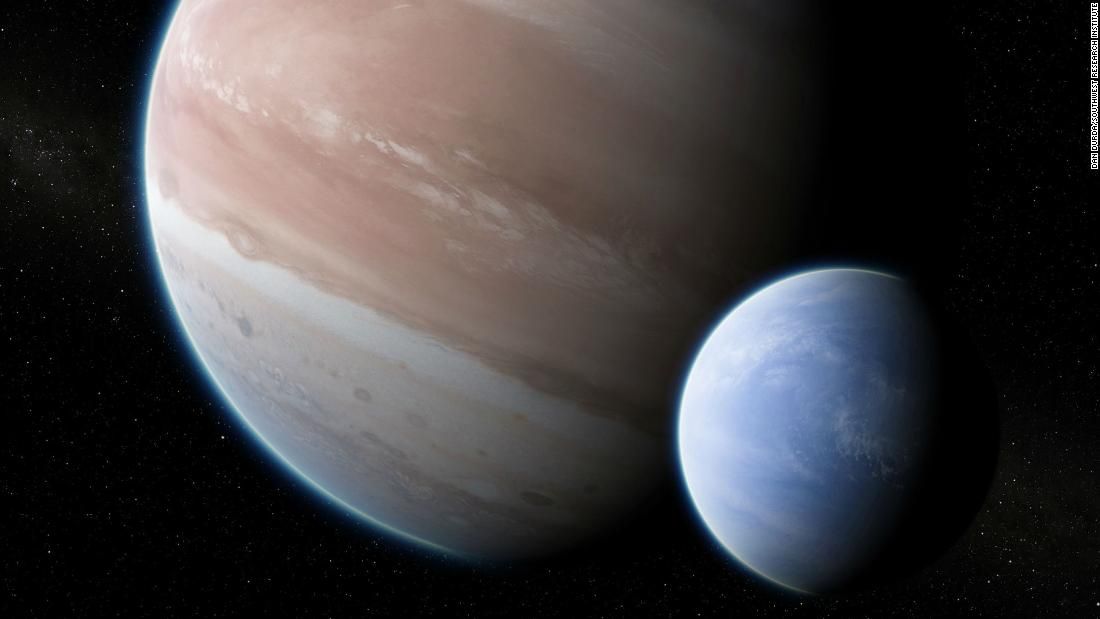Einstein’s Special Theory of Relativity was born from this very question, and the answer is as weird as you’d expect.



Perhaps physicists should leave human intuition at the laboratory door when designing quantum experiments too.
An Australian crew enlisted the help of a neural network — a type of artificial intelligence — to optimise the way they capture super-cold atoms.
Usually, physicists smoothly tune lasers and magnetic fields to gradually coax atoms into a cloud, according to study co-author Ben Buchler from the Australian National University.

Towards this goal, I have founded the company, Made of Mars, to develop the technology we need to build beyond Earth. Made of Mars is working to transform the materials and minerals that we know are on the Moon, Mars and asteroids throughout our solar system into products that we can use today. This innovation will be used to build the space civilization of tomorrow.
Made of Mars will begin by learning to build with volcanic basalt. Basalt is the same lava rock that forms Hawaii, Iceland and countless volcanoes around Earth. Basalt is the most common material on Mars and is widespread throughout Earth and much of the solar system. Starting with these rocks, basalt is mined, re-melted, and pulled into thin threads which are then woven into fabrics. Made of Mars is transforming these basalt fabrics into products you can use today. The first basalt product line has been launched on Kickstarter where these volcanic rocks will be highlighted through a series of wallets and computer cases. These simple products will showcase the material and process. Made of Mars aims to encourage development of this material, setting the stage for space necessities to eventually be built from basalt, from suits to spaceships.
Building for a future beyond Earth does not mean abandoning our planet. We have always been a species of explorers and migrants, but remain nostalgic for our roots. Learning to build with basalt will both be key for a future beyond Earth and our future on it. Our technological advancements have improved the lives of billions while putting a terrible strain on the resources and environments of Earth. Basalt may be a solution toward sustaining our home planet. It is one of the most abundant and widespread resources on Earth. Basalt is continuously erupting on the surface and requires no chemicals to process. Unlike cotton, it does not compete with food production. Unlike synthetics, it does not come from fossil fuels. After it is used, basalt can be remelted and reused. Discarded basalt would naturally weather and recycle back to new volcanoes, as is the natural cycle of basalt.


Human neurons are much larger than those of model organisms mice and rats, so it’s been unclear whether it’s size that makes a difference in our brain’s computational power. Now, in a study appearing October 18 in the journal Cell, researchers show that unlike those of other animals, human neurons employ highly compartmentalized signaling. Human dendrites—the tree-like branching structures that function as neurons’ antennas—process electrical signals differently than dendrites in rodents, the most common model systems for studying neuronal properties.
“The human neuron is basically like a rat neuron, but because it’s so much longer, signals have much farther to travel. The human dendrites thus have a different input-output function” from rats, says senior author Mark Harnett, the Fred and Carole Middleton Career Development Assistant Professor in the Department of Brain and Cognitive Sciences at the Massachusetts Institute of Technology. “Dendrites farther away from the cell body have fewer ion channels, which control signal processing. That was something we absolutely did not expect.”
Harnett, who studies how the biophysical features of neurons shape information processing in the brain, believes our longer, bigger dendritic arbors endow human neurons and their respective circuits with enhanced computational abilities.
Earlier this year, we hosted the Ending Age-Related Diseases 2018 conference at the Cooper Union, New York City. This conference was designed to bring together the best in the aging research and biotech investment worlds and saw a range of industry experts sharing their insights.
Joe Betts Lacroix of Y Combinator and Vium discusses the different ways in which entrepreneurs can focus on overcoming the diseases of aging, namely direct, indirect, and money-first approaches, and the strengths and weakness of each.
Joe was the primary technical founder of hardware/software startup OQO, which entered the Guinness Book of World Records for building the smallest fully featured PC. His experience spans from biotech research to electronics design. Very experienced in invention, prosecution and monetization of intellectual property, he has over 80 patents granted and pending in fields ranging from biophysics and safety systems to antennas, thermal systems, user interfaces, and analog electronics. He has written numerous peer-reviewed publications in fields such as biophysics, genetics, electronics, and robotics. Joe holds a Harvard A.B., an MIT S.M. and a Caltech research fellowship.
A single PET scan is over 3k.
A new study delivers the dark financial reality of cancer.

For the first time, astronomers have discovered what could be an exomoon, a moon outside our solar system. The exomoon was found around the gas giant exoplanet Kepler-1625b, which orbits a star 8,000 light-years from Earth.
Although moons are common in our solar system, which has nearly 200 natural satellites, the long search for interstellar moons has been an empty one. Astronomers have had success locating exoplanets around stars outside our solar system, but exomoons are harder to pinpoint because of their smaller size.

Six-hundred million people in Sub-Saharan Africa lack access to electricity. To meet these power needs, a mix of large public-run utility grids and standalone systems will be necessary for universal access in the region. Governments, aid organizations, and scientists are working to understand which electricity grid solution would be most cost-effective and reliable across urban, peri-urban, and rural areas.
Standalone, or “decentralized” electricity systems—most often solar power with battery storage—are usually thought to be too expensive compared to large state-run grids in all but the most remote locations. However, declining costs of solar and new battery technologies are changing the best pathways to deliver reliable power to people that currently lack access to electricity. New UC Berkeley research published today in Nature Energy finds that decentralized electricity systems in sub-saharan Africa can be designed for extremely high reliability, and that this may come at remarkably low costs in the future.
Jonathan Lee, a Ph.D. candidate in the Energy and Resources Group (ERG) and Associate Professor Duncan Callaway worked with more than 10 years of solar data from NASA and developed an optimization model that determines the lowest cost way to build a standalone system given component costs and a target reliability. At current costs, their model indicates that most regions in Sub-Saharan Africa can get 95% reliable power—meaning customers can use electricity from some combination of solar panels and batteries 95% of the time—for roughly USD$0.40 per kWh. Though that cost is high relative to current grid costs, their model indicates that with aggressive but plausible future cost declines in decentralized system costs, largely in batteries, these costs would drop to levels competitive with the grid in many parts of the continent in less than a decade.